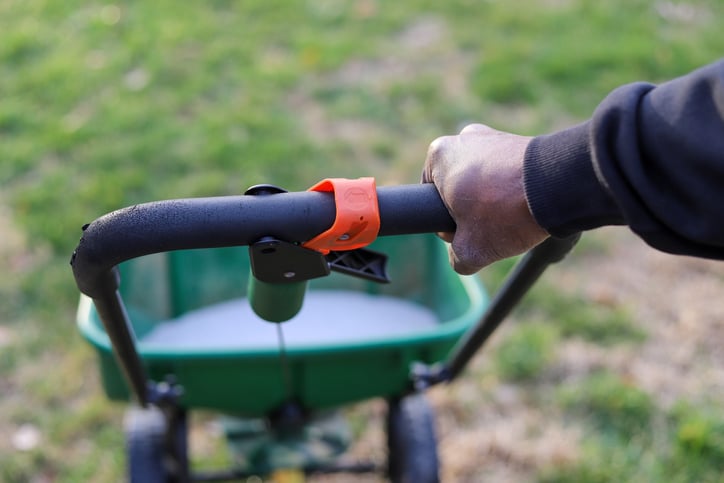If the stress of this summer resulted in your lawn thinning or developing dead spots, you’re probably wondering if there is something you can do. Before winter gets here, you’ll need something to encourage your grass to reestablish itself. A fall fertilizer application can help.
Applying fertilizer in the fall is a vital part of any year-long lawn care program. Fall fertilizer is not about weed and feed. It’s about providing your outdoor space with the nutrients it needs to thrive during the winter months. The cool-season grasses that we see in Michigan (such as bluegrasses, fescues, and ryegrasses) will benefit most when you apply fertilizer in autumn.
So, let’s find out when you should apply fall lawn fertilizer in Canton, MI, and the surrounding areas.
Why Fertilize Your Lawn In The Fall?
The theory behind late fall nitrogen fertilization of cool-season grasses is very simple. Apply low rates of N fertilizer (40 to 50 lbs/thousand square feet) in the late fall. At this time, cool temperatures are reducing top growth, but root growth is still active.
The N is used to “set up the plant” for winter and for healthy early spring growth. Not only does it enhance root growth aid in the uptake of water and nutrients, but carbohydrate buildup in the stem bases also promotes winter survival and spring regrowth.
When To Apply Fall Fertilizer
The end of October or early November is essential. The exact timing to fertilize varies based on weather conditions and climate zone; however, the final fertilizer application should be done sometime in November (at the very latest) in most regions.
An ideal fall fertilizer blend has nitrogen to phosphorus to potassium (N:P: K) ratio of 24-4-12 with isobutylidene diurea (IBDU). In this formulation, a small amount of nitrogen is immediately available to the grass blades, while the rest is a slow-release nitrogen form that takes longer to break down, which provides an extended feeding to the grass.
The push of phosphorus will stimulate root growth through November and even into early December. By helping roots grow before winter sets in, you’re ensuring that your lawn will green up quicker in the spring. They’ll spread farther and grow deeper in the ground as a result.
That’s because of the carbohydrates being produced in leaves and stored in the root system. And a stronger root system helps to provide your lawn with better tolerance to heat and drought stress, and healthy turf is also better able to withstand insect and disease problems.
Let Lush Lawn Help You
To get the rich, green grass you desire each spring, remember that fall fertilization holds the key. Lawns fertilized in fall have better green color in winter than those without fertilizer. Lush Lawn can provide you with everything you need to ensure your lawn comes back thriving each spring.
Our fall lawn care program provides a comprehensive 7-step package that takes care of everything from fertilizing to core aeration (which helps if you’re dealing with soil compaction), winterizing, and much more. Contact us today.
